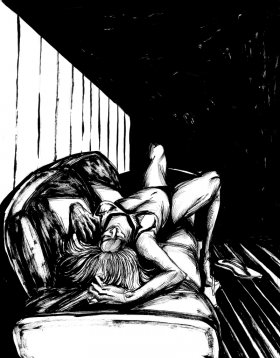
Every crime leaves a trail. But the Police does not always goes after it. Collecting material evidence makes a big difference. It had a big impact in the investigation of Tayná Adriane da Silvas death which took place in June 2013 in Colombo for instance. It was decisive too in the investigation of Isabella Nardoni´s murder which took March 2008 in São Paulo and led to the condemnation of two people. The special analysis in these cases like the examination of blood samples, DNA and security camera footage corroborated the work of the police or gave some leads to the investigators. Their goal is always to get rid of some doubts.
However, the examples listed above are exceptions. In most cases, the police does not use such type of evidence to find out who the author of the crime is. The exclusive analysis by Gazeta do Povo of 1000 murders that occurred in Curitiba between 2010 and 2013 shows that only 19% of the cases contain material evidence besides the two most basic regular examinations include necropsy and the examination of the crime scene. Material evidence can include the examination of cell-phones, ballistic cross-checks, the analysis of security camera footage, fingerprints and DNA tests, for example.
A majority of investigations are only based on the witness statements. "Not that the witness lacks credential, but sometimes, it ends up in a fight between ones words against anothers", says sociologist Pedro Bodê, coordinator of the Study Center for Public Safety and Human Rights at the Federal University of Paraná. According to the President of the Brazilian Association of Criminology, Iremar Paulino da Silva, no matter how well a crime is investigated, it is crucial to show evidence. "If there is no material evidence, the entire work of the investigator, of the police chief, will be toppled when it gets to court," he adds.
In addition to the small amount of material evidence collected by the investigators, the reporters of Gazeta do Povo have revealed that many inquiries lack the mandatory regular examinations. Of the inquires analyzed, 11% had no report of necropsy which is used to determine the cause of death and can be carried out up to ten days following the murder, according the Penal Code. The report of the analysis of the crime scene was absent in 50,4% of the inquiries.
Evidence is crucialWhen it is available, material evidence may lead a suspect to court. This is what happened in the case of a triple murder that took place in the Industrial City neighborhood in January 2011. Two men invaded a house pretending to be officers of the Civil Police. When the people living in the house requested the two men to show some official identification, the men answered with gun fires. Only one out of the four persons living in the house survived the crime. A ballistic exam showed which type of weapon had been used during the crime. With this information, the police identified a suspect who is now appearing before court to respond to the deaths of three people.
Suspected of strangling his wife to death, a man is released because of a lack of police report
João (fictious name) was argueing with his wife Rosimeire. In the early hours of the morning of December 10th 2010, he called the Siate which recorded the womans death by strangulation. He denied the crime. João was arrested but, two months later, Justice asked for his release for a simple motive: the necropsy had not been done. Without this element, there was no evidence that Rosimeire had been murdered, said the judge.
The reportage also showed long delays in providing the results of the necropsy. Gazeta do Povo reporters showed that the Scientific Police takes four months on average to write the report of the exam that determines the nature of the victims death. They also came across at least 36 cases set up in 2013 that lacked this document attached to the inquiry thirty days after the murder was reported. In five cases, the necropsy exam had not been included to the inquiry as up as 90 days after its setting up. The reports may have been written, but there were not yet officially part of the investigation.



